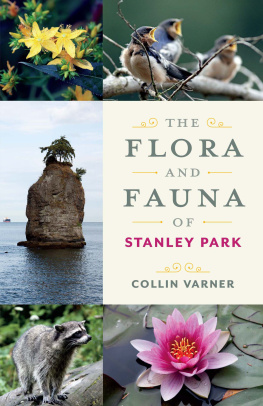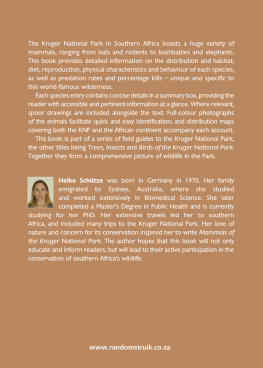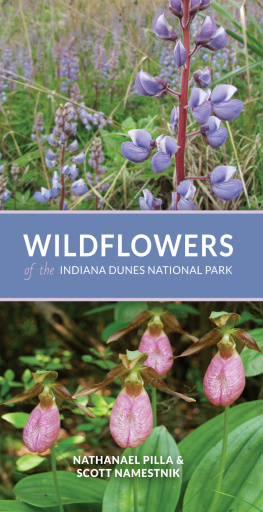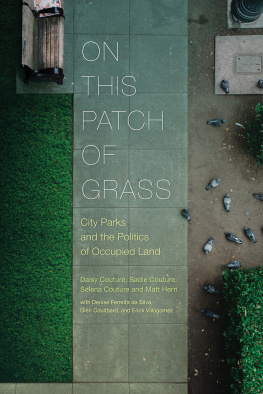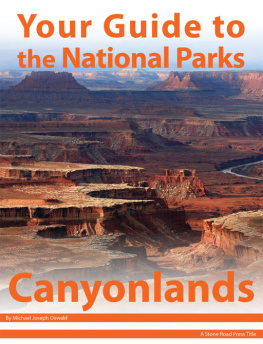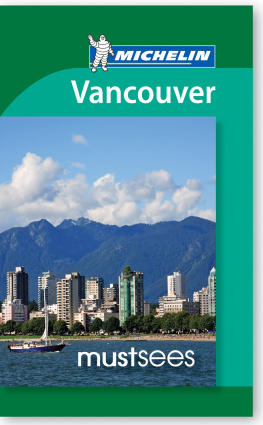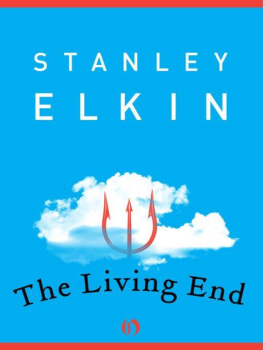Contents
Illustrations
Guide
Page List

The Flora and Fauna of Stanley Park

COLLIN VARNER

Copyright 2022 Collin Varner
All rights reserved. No part of this publication may be reproduced, stored in a retrieval system, or transmitted in any form or by any meanselectronic, mechanical, audio recording, or otherwisewithout the written permission of the publisher or a licence from Access Copyright, Toronto, Canada.
Heritage House Publishing Company Ltd.
heritagehouse.ca
Cataloguing information available from Library and Archives Canada
978-1-77203-405-9 (paperback)
978-1-77203-406-6 (e-book)
Edited by Warren Layberry
Proofread by Renate Preuss
Cover and interior book design by Setareh Ashrafologhalai Front cover photographs (counter-clockwise from top right): Barn swallows, St. Johns wort, Siwash Rock, common raccoon, and American white water-lily All images by Collin Varner, except Northern Bluet, p. 229, by Don Henise, Flickr.
All photos have been altered to fit the layout.
Map by Eric Leinberger
The interior of this book was produced on fsc -certified, acid-free paper, processed chlorine free and printed with vegetable-based inks.
Heritage House gratefully acknowledges that the land on which we live and work is within the traditional territories of the Lkwungen (Esquimalt and Songhees), Malahat, Pacheedaht, Scianew, TSou-ke, and w sne (Pauquachin, Tsartlip, Tsawout, Tseycum) Peoples.
We acknowledge the financial support of the Government of Canada through the Canada Book Fund ( cbf ) and the Canada Council for the Arts, and the Province of British Columbia through the British Columbia Arts Council and the Book Publishing Tax Credit.

26 25 24 23 22 1 2 3 4 5
Printed in China
Contents

Introduction

O n september 27, 1888, the second mayor of Vancouver, David Oppenheimer, presided over the opening ceremonies at Vancouvers Stanley Park. The man for whom it was named, Governor General Sir Frederick Arthur Stanley, the same fellow who donated the Stanley Cup, the oldest professional sports championship trophy in North America, would be present for the official dedication the following yearthe first governor general to visit British Columbia.
It is interesting that the 1,000-acre parcel of land that is now named Stanley Park was, for over 8,000 years, one of the largest Indigenous settlements in the Vancouver area. In 1863, with concerns over a potential American attack on the west coast of Canada, the Government of Canada deeded this land into a federal military reserve, although it had never been ceded by the resident Coast Salish Peoples.
It was around this time that a handful of land speculators were buying up the west end of Vancouver right up to the edge of the military reserve. They were considered greenhorns because the future city was expected to expand eastward, not west. In 1886, the relationship with the United States was friendlier, and the Canadian federal government was expected to release the military reserve. Land speculators and newly elected civic politicians were concerned about the 1,000-acre land release (and the possibility of their land holdings diminishing in value). Letters were sent to the federal government suggesting the military reserve land be put into a public park. Two years later, Mayor David Oppenheimer gave his ceremonial speech to a gathered crowd, announcing that the military reserve was now a public park.
Whether it was a land grab or the wonderful foresight of our civic politicians, it now does not matter. Stanley Park has been voted the worlds best city park and is now known as the Jewel of Vancouver.
About This Book
This book does not go into great depths about the history of Stanley Park. There are many fine books on that subject, the latest being Legacy of Trees: Purposeful Wandering in Vancouvers Stanley Park by Nina Shoroplova.
This book looks at the plants and animals that live and breathe within its boundaries. It features full-page entries on 190 species found within Stanley Park with an additional 134 species mentioned in an appendix providing viewing information.
It is worth pointing out, however, that the 300+ species of flora and fauna presented here do not represent an exhaustive list. Indeed, a book this size could be filled with nothing but birds. Insects and invertebrates could easily fill a book twice this size, though many of those species would be hard to differentiate even with photographs. The truth is that a comprehensive list of species of Stanley Park that included mosses and lichens and grasses and everything that might be found beneath a rock at low tide or crawling behind the bark of a fallen tree or wending its way through the muck of Beaver Lake would not be a handbook, but a massive tome (and of interest to very few).
Additionally, unless otherwise stated, the traditional uses for most of the species included in this book can be attributed to the various Indigenous Peoples who have been active in this area of the bc coast for centuries, namely the xmkwym (Musqueam), Skwxw7mesh (Squamish), and Sllwta/ Selilwitulh (Tsleil-Waututh) Peoples, on whose traditional and unceded lands Stanley Park is situated. More specific details are provided in places based on my research and notes from other experts in Indigenous ethnobotany, who have so helpfully provided feedback to fill in some blanks.
My experience suggests that when people come to Stanley Park, especially for the first time, they often want answers to three fairly basic questions, namely, What kind of bird is that? What is that enormous tree? and Can I eat this berry?
This book was put together with that in mind.
disclaimer: Foraging and hunting within Stanley Park is strictly forbidden, and although this book mentions some of the traditional uses of edible plants for medicinal or other purposes, the author does not advocate the use of these plants for such purposes. Many plants in this region, including those with some medicinal uses, can be harmful or even poisonous. Similarly, feeding or approaching wildlife is strongly discouraged. The author and publisher encourage readers and visitors to Stanley Park to use this book only to identify, observe, and enjoy the unique plants and animals here without disrupting them.
Experiencing Stanley Park
I remember being in Grade 3 and walking home from school for lunch one day only to find a Rolls Royce, complete with chauffeur, parked in front of my home. This was 1963, and quite out of the ordinary for Kitsilano. Our family was anything but wealthy; my mom was an at-home seamstress who made dresses for some wealthy women in Vancouver. After lunch, as I was leaving for school, I heard my moms client ask if she would like a ride in her Rolls Royce, and since it was lunchtime, my mom said she would love to. When I got home from school, the first thing I asked was where she had gone. It turned out they had driven through Stanley Park. According to my mom, she had remarked on how beautiful the park was to her client, who smiled and nodded.

